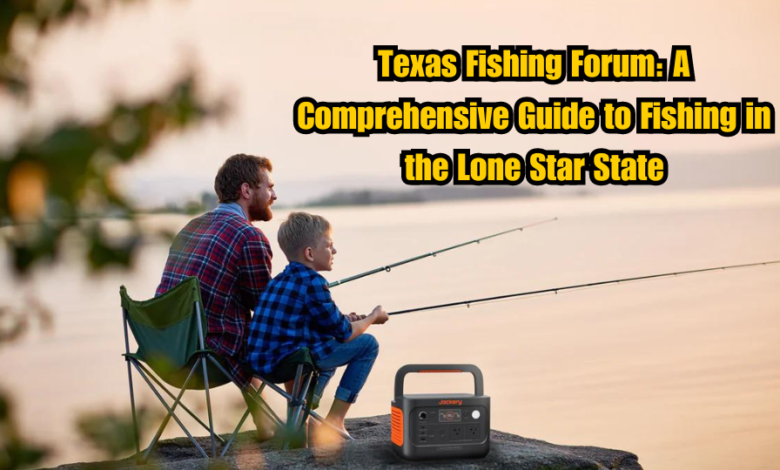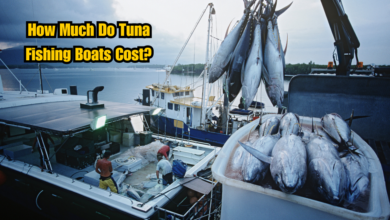Texas Fishing Forum: A Comprehensive Guide to Fishing in the Lone Star State

Texas is a state known for its vast landscapes, diverse ecosystems, and, of course, incredible fishing opportunities. From the Gulf Coast to its myriad of freshwater lakes, rivers, and reservoirs, Texas offers anglers some of the best fishing in the country. Whether you’re a seasoned angler or a beginner, this guide will provide an in-depth look at Texas fishing, covering essential techniques, top fishing spots, and the best times of the year to fish. Join us as we dive into everything you need to know about fishing in the Lone Star State.
Visit Now – Texas Fishing Forum
Understanding Texas Fishing Laws and Regulations
Before hitting the water, it is important to be familiar with Texas’s fishing laws and regulations. These rules ensure that fishing in Texas remains sustainable and enjoyable for future generations. The Texas Parks and Wildlife Department (TPWD) manages these regulations, and they are updated regularly.
Fishing License Requirements
A valid Texas fishing license is required for most anglers. Both residents and non-residents must obtain a license unless exempt by law. Fishing licenses can be purchased for one day, one year, or even lifetime packages. If you’re fishing in saltwater or freshwater, ensure that your license covers the type of water body where you’ll be casting your line.
To keep updated on regulations or purchase a license online, visit the Texas Parks and Wildlife Department website.
Size and Bag Limits
Texas imposes size limits on certain species to ensure that fish populations remain healthy. Common species such as largemouth bass, catfish, and red drum have specific size and bag limits. Bag limits refer to the maximum number of fish that you can catch and keep in a day. Be sure to check for updates on these limits, especially if you are planning to fish in restricted or protected waters.
Catch-and-Release Areas
Certain bodies of water in Texas are designated as catch-and-release zones, particularly for species like trophy bass or trout. In these areas, all fish caught must be released immediately back into the water. This practice ensures the conservation of fish populations, particularly in areas of heavy fishing pressure.
Top Fishing Spots in Texas
Texas is home to over 500,000 acres of lakes and reservoirs, along with thousands of miles of rivers and streams. Here are some of the best fishing locations across the state.
1. Lake Fork Reservoir
Located about 65 miles east of Dallas, Lake Fork is often regarded as one of the premier bass fishing lakes in the world. It’s particularly famous for producing trophy-sized largemouth bass, and it holds the Texas state record for the largest bass caught, weighing over 18 pounds.
Best time to fish: The spring months (March-May) are particularly fruitful for bass fishing, as fish move to shallower waters to spawn.
2. Falcon Lake
Straddling the Texas-Mexico border, Falcon Lake is known for its bass fishing. The warm climate allows bass to grow large here, and the lake regularly produces fish over 10 pounds.
Best time to fish: Late winter through early spring is the best time to fish, especially for trophy-sized bass.
3. Guadalupe River
For those looking for trout fishing, the Guadalupe River offers some of the best opportunities in the state. The Texas Parks and Wildlife Department stocks the river with rainbow trout during the cooler months.
Best time to fish: Trout fishing is ideal in winter (December to February), when water temperatures are cool enough to sustain the species.
4. Port Aransas
For saltwater enthusiasts, Port Aransas on the Texas Gulf Coast is a fantastic destination. The area offers a variety of fish species, including redfish, speckled trout, and flounder. Offshore fishing can also yield snapper, kingfish, and even marlin.
Best time to fish: Summer months (June-August) are ideal for offshore fishing, while inshore fishing is good year-round.
Fishing Techniques for Texas Waters
Depending on whether you’re fishing in freshwater or saltwater, different techniques will give you the best results. Here are some of the most effective methods for catching fish in Texas.
1. Texas Rig for Bass
The Texas rig is one of the most popular methods for catching largemouth bass in Texas’s lakes and reservoirs. This simple rig consists of a soft plastic bait, such as a worm or creature bait, rigged weedless on a hook with a sliding bullet weight. It’s perfect for fishing in areas with heavy cover, such as grass beds, timber, or rock piles.
2. Live Bait for Catfish
For catfish, live bait such as shad, bluegill, or nightcrawlers is incredibly effective. Catfish in Texas tend to be large, particularly in the deeper parts of lakes like Lake Texoma and Lake Livingston.
3. Fly Fishing for Trout
For anglers looking to try their hand at fly fishing, the Guadalupe River is perfect for catching rainbow trout. Dry flies and small streamers are commonly used, especially during the cooler winter months when trout are most active.
4. Saltwater Fishing Techniques
For those heading to the Gulf of Mexico, techniques such as drift fishing, bottom fishing, and trolling are highly effective. In shallow bays, anglers often use live shrimp or artificial lures to catch speckled trout and redfish. Offshore fishing generally involves trolling large baits to attract species such as tuna and marlin.
Best Times to Fish in Texas
While fishing is a year-round activity in Texas, certain seasons are better for catching specific species. The state’s diverse climates—ranging from humid subtropical in the east to semi-arid in the west—mean that weather plays a significant role in determining when and where to fish.
1. Spring (March-May)
Spring is often regarded as the best season for freshwater fishing in Texas. As water temperatures warm, fish become more active and begin their spawning cycles. Largemouth bass, crappie, and catfish are particularly active during this time.
2. Summer (June-August)
The summer months can be hot, but they are also prime time for saltwater fishing along the Gulf Coast. Offshore anglers can expect to catch snapper, kingfish, and shark. Freshwater fishing can be productive in deeper lakes where cooler water temperatures prevail.
3. Fall (September-November)
Fall is an excellent time for flounder fishing in the Gulf Coast. As temperatures cool, largemouth bass and catfish also become more active in freshwater lakes and rivers.
4. Winter (December-February)
While many anglers might think of winter as the off-season, Texas offers fantastic trout fishing during these months, particularly in the Guadalupe River. Offshore, red drum and black drum are still active in the cooler Gulf waters.
Fishing Tournaments and Events in Texas
For those looking to challenge their fishing skills, Texas offers a wide variety of fishing tournaments and events throughout the year. Whether you’re a seasoned pro or a casual angler, these tournaments offer fun and competition.
1. Bassmaster Texas Fest
This annual event is part of the Bassmaster Elite Series and brings the best professional anglers in the country to Texas. Held on some of the state’s premier lakes, such as Lake Fork, this event is a must-watch for bass fishing enthusiasts.
2. Texas Billfish Classic
For those interested in offshore fishing, the Texas Billfish Classic is one of the premier saltwater tournaments in the state. Anglers from all over the world come to compete for prizes by catching blue marlin, sailfish, and other large offshore species.
3. CCA Texas STAR Tournament
The Coastal Conservation Association (CCA) hosts this statewide tournament, which offers some of the biggest prizes in fishing, including boats and trucks. The competition focuses on saltwater species like red drum and speckled trout, and it runs from Memorial Day to Labor Day each year.
Essential Gear for Texas Fishing
Having the right gear can make all the difference when fishing in Texas. Whether you’re fishing freshwater lakes or the Gulf Coast, here are the essentials every angler should consider.
1. Fishing Rods and Reels
For bass fishing, a medium-heavy rod paired with a baitcasting reel is ideal. If you’re targeting trout or smaller freshwater fish, a spinning reel and light-action rod are better suited. Saltwater fishing, particularly offshore, often requires heavier rods and high-capacity reels to handle the larger species.
2. Bait and Lures
In freshwater, soft plastic baits, spinnerbaits, and crankbaits are commonly used to target bass and crappie. For saltwater, live bait such as shrimp or cut mullet is very effective for catching redfish, trout, and flounder.
3. Tackle Boxes and Accessories
A well-organized tackle box is essential for any angler. Ensure that you have a variety of hooks, sinkers, swivels, and extra line on hand, as well as essential tools like needle-nose pliers and fish grippers.
Conservation Efforts and Sustainable Fishing in Texas
Fishing in Texas wouldn’t be what it is today without significant efforts in conservation. Organizations like Texas Parks and Wildlife Department and the Coastal Conservation Association work to protect the state’s natural resources, ensuring that future generations can enjoy the same fishing experiences.
1. Habitat Restoration
Efforts to restore fish habitats in Texas have been ongoing for decades. This includes the installation of artificial reefs in the Gulf of Mexico and the creation of fish-friendly structures in freshwater lakes.
2. Stocking Programs
Texas actively stocks fish in both freshwater and saltwater environments. Popular species like largemouth bass, catfish, and trout are regularly stocked in lakes and rivers to maintain healthy populations.
3. Catch-and-Release Best Practices
For those practicing catch-and-release, it’s important to handle fish with care to minimize injury. Use barbless hooks, keep fish in the water as much as possible, and avoid touching the gills when releasing.
Texas offers some of the best fishing experiences in the country. Whether you’re looking to reel in a trophy bass, enjoy a day of trout fishing, or explore the vast Gulf Coast, there’s something for every angler. With rich opportunities year-round and a commitment to conservation, fishing in Texas will remain a beloved pastime for years to come. Be sure to stay informed about current regulations, use the right techniques, and enjoy all that the Lone Star State has to offer.




